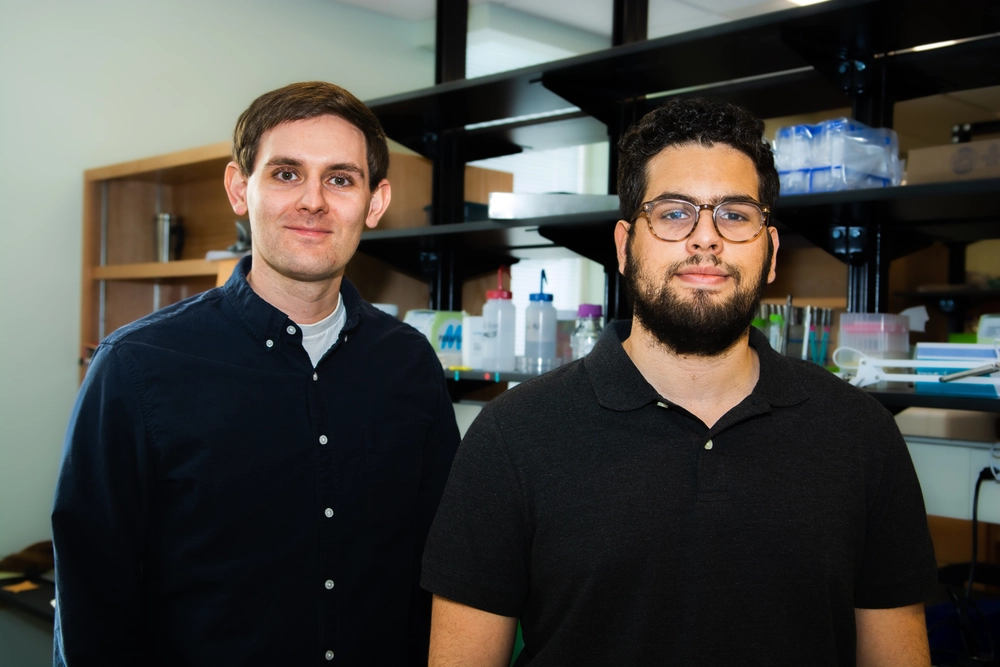
Residents of northern states are familiar with the concept and reality of windchill. With the combination of strong winds and the chilly weather, we become more sensitive; it feels colder than the registered temperature. Researchers from the School of Molecular & Cellular Biology at the University of Illinois Urbana-Champaign have shown that bacteria are susceptible to a similar phenomenon: high levels of fluid flow make pathogenic bacteria more sensitive to chemical stress.
“Flow makes cells 100 to 1,000 times more sensitive to hydrogen peroxide,” explained Gilberto Padron, first author on the paper and PhD candidate in the lab of biochemistry professor Joe Sanfilippo. Their research interweaves biology, chemistry, and physics to understand how bacteria respond to stress. They use microfluidics, an engineering approach which allows for the creation of a more realistic environment than that of a test tube by introducing fluid flow.
New research has led them to discover the addition of fluid to human pathogens triggers a “windchill-like” effect that sensitizes cells to hydrogen peroxide, a well-known agent of cell stress and DNA damage. Their findings provide a mechanistic answer for how flow evokes a transcriptional response in the presence of stress and offers a fuller understanding of the effect flow has on cell physiology.
In the new paper published in PNAS, Padron and Sanfilippo detail their foray into figuring out the relationship between flow and bacterial gene expression, beginning with Pseudomonas aeruginosa, a human pathogen whose infections are common in individuals in immunocompromised states such as cystic fibrosis and which tend to affect the lungs. Using stress-induced genes as an indicator of flow response, they tested the hypothesis that flow affects chemical transport of a then-unknown molecule Sanfilippo aptly named “Molecule X.”
“We knew flow was affecting a small molecule, but we didn’t know which small molecule," said Sanfilippo, who has been researching flow since his postdoctoral days in Princeton University.
A timely collaboration with UIUC microbiology professor Jim Imlay, whose research focuses on oxidative damage, resulted in the discovery that “Molecule X” was hydrogen peroxide (H2O2). Several microfluidic experiments, as well as computational simulations, allowed Padron and Sanfilippo to conclude that high levels of fluid flow were replenishing H2O2 faster than cells could break it down. Without flow, cells scavenge H2O2 rapidly, removing the stressor and preventing a stress response. However, fluid flow replenishes H2O2 faster than cells can remove it, leading to high concentrations of the stressor and a stress response.
To test if a flow stress response happens in other bacteria, the previous experiments were then repeated in Staphylococcus aureus by Alex Shuppara, a PhD student in the Sanfilippo lab. S. aureus is a human pathogen known to cause infections throughout the human body, including heart valves and the bloodstream. The work on S. aureus was done in collaboration with Dr. Jana Radin and microbiology professor Thomas Kehl-Fie. The UIUC researchers used a flow rate and H2O2 concentrations found in the blood to recreate bloodstream conditions in a microfluidic device. In these conditions, S. aureus initiated a robust stress response, indicating that the combined effects of fluid flow and H2O2 are stressful to the pathogen.
Looking to the future, their findings highlight the importance of considering flow in experiments on bacterial pathogens.
“The discovery that flow sensitizes bacteria to H2O2 should get us thinking about the effects of H2O2 stress and the role flow plays in the restriction of bacterial growth in the bloodstream,” Sanfilippo said.
“Over the last few decades, scientists have focused on studying cells in very simple conditions because it was hard enough to figure out how cell processes worked in a test tube. Now that we have such a robust understanding of how cells behave in simple environments, we can get a bit more complicated,” he added.
This discovery launches an exciting new line of investigation in the Sanfilippo lab, whose future research will focus on how physical and chemical stress combine to affect bacterial infection.
The paper, “Shear rate sensitizes bacterial pathogens to H2O2 stress,” was published in PNAS and supported by the National Institutes of Health.


